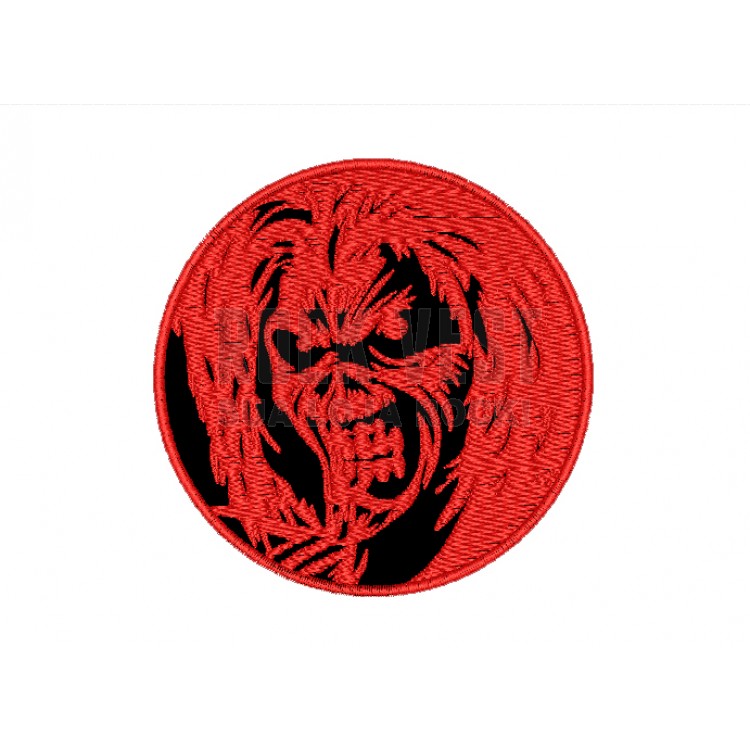

It’s not all about Di’Anno, either Harris was still refining his ideas as a songwriter. Sure, “Wrathchild” and “Free” are plenty great and far more memorable than most NWOBHM obscurities, but they wouldn’t have made Maiden a global force. Those declarations undercut metal’s capacity for exploration, growth, and having a higher sense of purpose. There are still fans who insist that the Di’Anno Maiden of these first two albums is the best Maiden-contrarians, honestly. And on the title track, he introduces two vocal tics that Dickinson would master-terse declarations in the verses, arena-ready “whoas” in the open spaces. By doubling down on attitude, and bolstered by the record’s brightness, he sounds more confident and able. “Wrathchild” blends the menace of “Prowler” and the breezy fun of “Running Free,” while “Murders in the Rue Morgue” shows that Di’Anno is trying to match Harris’ ambition as he keeps up with the jittery bass. Adrian Smith’s addition on second guitar allows for bombastic dynamics with Dave Murray, another piece of Maiden’s grand design.

In 1981, Killers shined floodlights on the debut’s dinginess, allowing Maiden to clear the muck from a dirty rocker like “Purgatory” without removing its grimey heart. It’s too slow for his hesher persona, requiring a sensitivity he just couldn’t summon. “Remember Tomorrow” isn’t even as complex as “Opera,” but you can still hear Di’Anno’s limits during the quasi-ballad. It’s here that Harris sets the template for Maiden’s longer, more complicated but melodically rich songs by fusing jumping basslines inspired by Yes to bastardized classical ideas routed through heavy rock (in essence, metal, or what Deep Purple’s Ritchie Blackmore had done). “Phantom of the Opera,” to wit, seems written for Bruce Dickinson two years before he joined Maiden, as it’s the first taste of what bassist and mastermind Steve Harris wanted his band to be. It’s unclear on Maiden’s first two records if Di’Anno is an untethered beast or a weird stalker (probably the latter), but he gives Maiden’s crisp melodies an energy that would remain a calling card.ĭi’Anno excels at these kinds of barreling tracks, which is why he ultimately wasn’t long for the world of Maiden. “Prowler” succeeds on self-assurance, too. “Running Free” is the first archetypal song from a band with several of them, as they doggedly pursue some ambiguous form of “freedom.” It barely matters what freedom is, though, as Di’Anno convincingly sells the idea that going blind into the future is the only way during the gutsy chorus. The distance is evident from the jump on their self-titled debut, brimming with hooks and attitude. You link Maiden with Sabbath and Judas Priest, not Tygers of Pan Tang and Satan. Maiden arose from the New Wave of British Heavy Metal (NWOBHM) scene at the dawn of the ’80s, though they’re so foundational to metal they’re often not talked about in that way. If Sabbath birthed metal, Maiden looks and oftentimes sounds more like metal’s stereotypical boogeyman. And watching Maiden develop was watching metal develop, shaking off the haze of 1970s boogie and speeding up its attack while borrowing from the harder side of progressive rock. Beast and Piece of Mind are redoubtable metal classics still, even if it’s hard to consider “Run to the Hills” and “The Trooper” pieces of a work in progress, they are points along Maiden’s path to becoming the global behemoth that made 1984’s Powerslave, their landmark fifth album. These records are not flawed but certainly developmental, battles won and occasionally lost on the journey to supremacy. Dickinson replaces the scrappy upstart Paul Di’Anno, pushing the band to the next level of power and popularity. These four albums, issued one per year from 1980 to 1983, show a band in constant mutation: Melodies get stronger. Still, this is the band that harnessed 1980s fear and turmoil in order to shape metal as we know it, and these records deserve any life support a record label wants to give them.
IRON MAIDEN EDDIE KILLERS PATCH
Knowing that hardcore Maiden collectors are legion, the only addition is that The Number of the Beast-the band’s third album and the first featuring dynamo singer Bruce Dickinson-includes a plastic figurine of the iconic Eddie and a patch of, well, the Devil. These versions don’t add much they are CD dumps of 2015 vinyl remasters with the original British tracklists. It’s part of a year-long project by Parlophone to recommit the band’s 16 studio albums to CD, four at a time, though availability has never exactly been an issue. Iron Maiden’s first four albums- Iron Maiden, Killers, The Number of the Beast, and Piece of Mind-have been reissued again.


 0 kommentar(er)
0 kommentar(er)
